The far right is gaining power in Europe, fuelled by conspiracies about migrant invasions and a shrinking white population.
But someone else is funding it: powerful tech billionaires in the US, who have their own agenda at play.
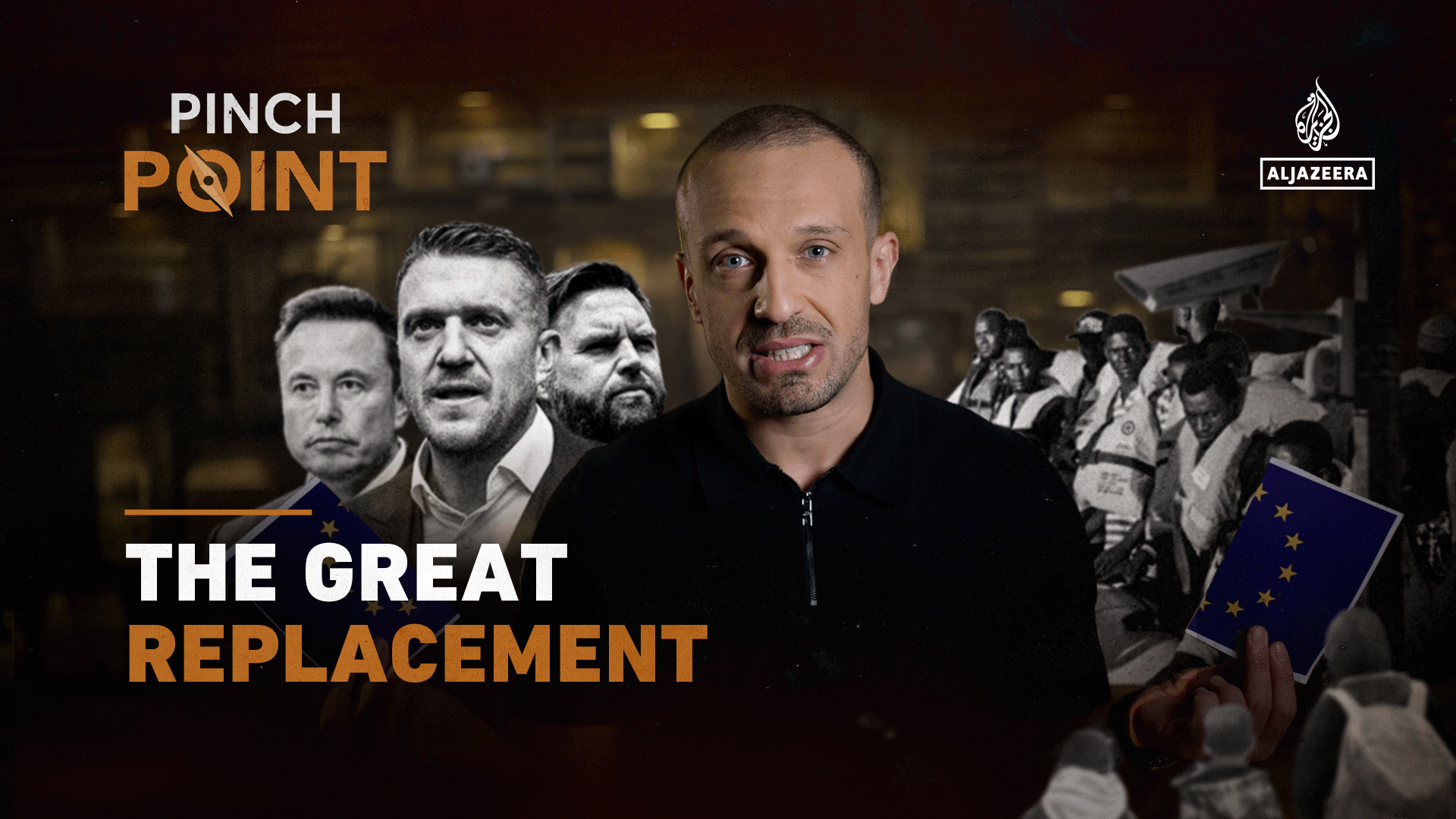
The far right is gaining power in Europe, fuelled by conspiracies about migrant invasions and a shrinking white population.
But someone else is funding it: powerful tech billionaires in the US, who have their own agenda at play.
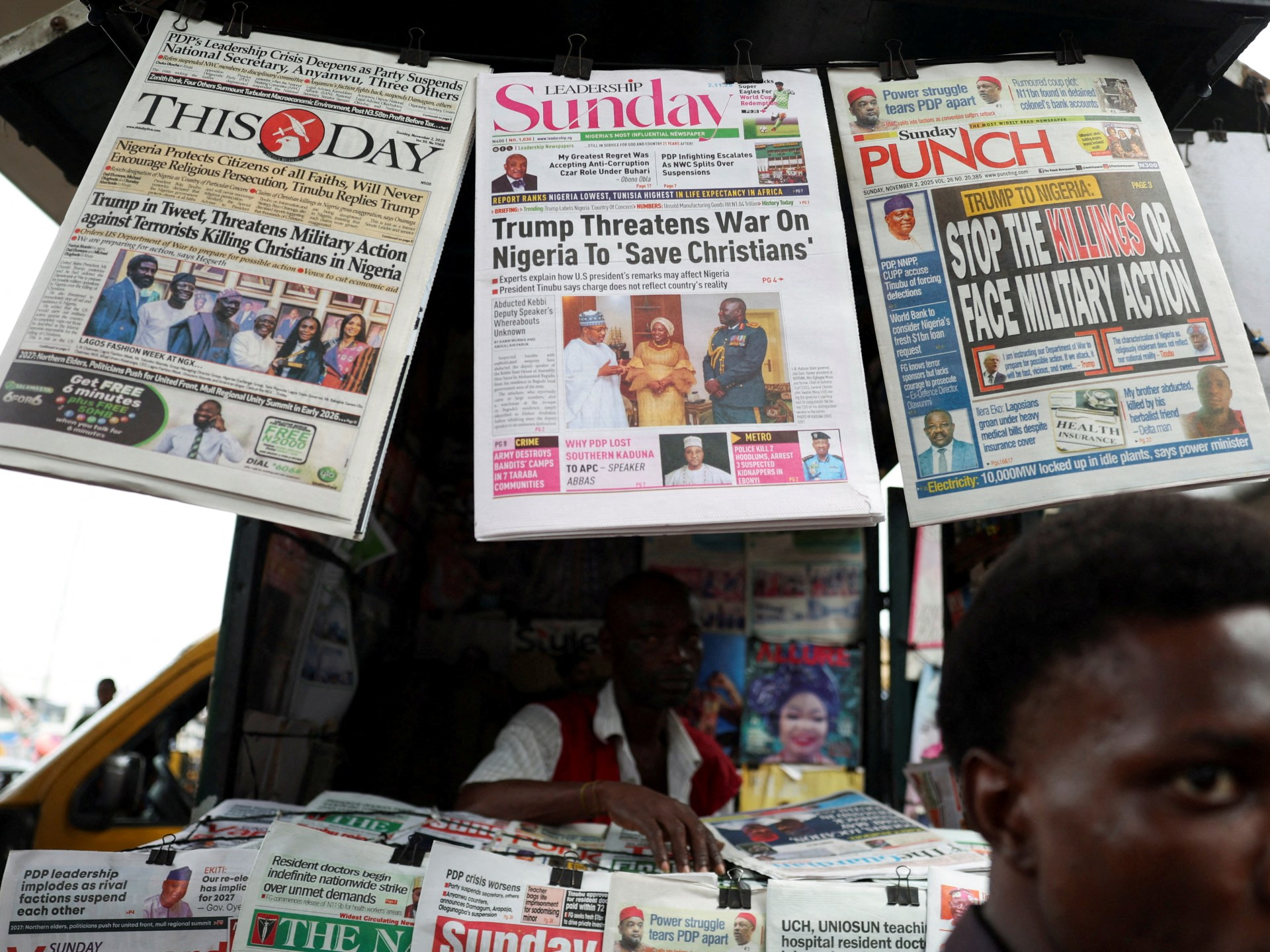
In early November, United States President Donald Trump declared that “Christianity is facing an existential threat in Nigeria”. In a series of posts on his Truth Social platform, he accused “radical Islamists” of “mass slaughter” and warned that the US “may very well go into that now disgraced country, guns-a-blazing“.
The claim rested on a familiar assumption: that violence in Nigeria is driven by religious ideology, with Christians targeted by Islamist militants.
In mid-November, a new wave of school abductions revealed how perilous parts of northern Nigeria have become for children of all faiths. On November 17, armed men raided Government Girls Comprehensive Secondary School in Maga, Kebbi State, killing a vice principal and abducting 25 students. The school was state-run, and the victims were Muslim girls. One escaped, and the remaining 24 were later rescued.
Days later, in the early hours of November 21, gunmen stormed St Mary’s Catholic Primary and Secondary School in Papiri, Niger State, abducting pupils and teachers. While some captives later escaped or were released, many remained missing into mid-December, leaving families in agonising uncertainty. Parents continue to wait without answers, their desperation and anguish hardening into anger as official assurances fade.
Taken together, these attacks do not reflect a campaign of religious persecution. They follow a pattern that has become increasingly familiar across northern Nigeria: mass kidnapping for ransom, striking opportunistically rather than along religious lines.
Trump’s remarks do more than misdiagnose this violence. They reimagine it. With a few lines of incendiary rhetoric, a country grappling with criminal insecurity and institutional collapse is recast as a front line in a civilisational struggle — a place where force, not reform, becomes the implied solution.
Once framed that way, Nigeria is no longer a society in need of protection and repair, but a battlefield-in-waiting.
That shift matters. When violence is described as religious war rather than organised crime, responsibility moves outwards, solutions become militarised, and foreign intervention begins to sound not reckless but righteous.
This pattern is hardly surprising.
American power has a habit of transforming complex foreign crises into apocalyptic moral dramas, and then acting on the story it has told itself.
Nonetheless, Nigerian church leaders, who know the terrain and the people intimately, reject Washington’s narrative. The Catholic Bishop of Sokoto, Matthew Kukah, a leading figure in Nigeria’s peacebuilding efforts, for example, cautioned against interpreting the violence as religious warfare, pointing instead to criminal motives and state failure.
Analysts concurred, emphasising that attacks fall on Christians and Muslims alike and often follow patterns of banditry and ransom rather than theology.
In Kebbi State, the victims were Muslim schoolgirls taken from a state-run boarding school. In Niger State, the targets were pupils and teachers at a Catholic mission school. Across Zamfara, Katsina, Sokoto, Kaduna, Niger and Plateau states, villages have been raided, farms abandoned and populations displaced.
This violence is driven primarily by profit-driven criminal violence rather than religious belief.
Chronic poverty, rural neglect and youth unemployment — with about 72 percent of rural Nigerians living in multidimensional poverty — fuel recruitment into criminal and armed networks.
True to Bishop Kukah’s analysis, ideology accounts for far less of this violence than predatory criminal behaviour and opportunism. What flourishes instead is organised crime in areas where the state barely functions. The principal threat now stems from armed “bandit” networks rather than a single ideologically driven insurgent movement.
These criminal militias kidnap schoolchildren and commuters for ransom, rustle cattle, extort villages, attack highways and, according to multiple reports, increasingly tap into illegal mining economies, often operating from forest bases across the northwest.
At the same time, Nigeria is not confronting one armed threat but several. Across the northeast, Boko Haram and the ISIL (ISIS) affiliate in West Africa Province (ISWAP) remain active. In the northwest and north-central regions, armed bandit networks dominate. Further south, in the middle belt, militia violence feeds on land disputes and communal tensions.
The outcome has been mass displacement and civilian death on a devastating scale.
Amnesty International estimates that more than 10,000 civilians were killed in armed attacks in the two years after May 29, 2023, when President Bola Tinubu took office. Hundreds of villages have been destroyed or emptied. Thousands of children have abandoned school. In parts of the northwest, attacks are reported to occur weekly and, at times, even daily. More disturbingly, kidnapping now reaches highways and commuter routes in and around the capital, Abuja.
To treat this catastrophe as religious persecution is not just inaccurate but profoundly dangerous. This false framing transforms organised crime and state collapse into a myth of religious war, one that obscures causes and invites disastrous cures.
That is why language matters: it shapes intent and consequences.
When Washington defines domestic collapse as moral failure, Nigeria ceases to be seen as a country in need of reconstruction and starts to look like an international threat to be managed from outside.
Global attention shifts from strengthening local institutions towards employing financial leverage, coercive tools and military force.
Communities become talking points in US politics.
In the process, Nigerian citizens are reduced to abstractions rather than treated as living human beings with rights, and localities like Kebbi and Niger are recast as conflict zones instead of places in need of urgent repair.
When powerful states define a crisis, they begin shaping the outcome.
History offers no reassurance.
From Iraq to Libya, US-led interventions have ushered in untold devastation, leaving in their wake public institutions in ruins and wars without end.
Crucially, every military campaign promised peace and stability. Over time, every mission has killed thousands of civilians and left entire countries in ruins.
If US forces entered Nigeria, even in small numbers, foreign troops would quickly become magnets for attack and targets for retaliation, turning villages and forest communities into potential battlefields.
Communities would be squeezed between bandits and foreign firepower, as criminal networks splinter, rebrand and adapt to the new battlefield.
This is the architecture of the US’s war cycle: an excuse first, force second, and civilian lives last.
Nigeria should not assume immunity from this great power logic, as countries do not become warzones overnight. They are first described as failures, then reframed as threats, before being treated as acceptable targets.
Nigeria’s institutional weakness is no accident. It is rooted in years of protecting assets instead of people, while neglecting policing, justice and basic services.
Colonial and post-colonial rule built systems for natural resource extraction rather than citizen protection. For many decades, often under military rule, securing oil revenue and political control mattered more than effective governance, public welfare or human security.
In the Niger Delta, this approach has meant environmental ruin, loss of livelihoods and institutional neglect — the true cost of protecting wealth before people.
Today, that systemic design persists: the state still defends assets more effectively than lives, while inequality and neglect have deepened civilian exposure.
Even so, Nigeria still has options.
In late November, Tinubu declared a nationwide security emergency, ordered the recruitment of 20,000 additional police officers as part of a broader expansion plan, redeployed VIP escorts to front-line duties, and authorised the deployment and expansion of DSS forest guards to hunt bandits and rebels.
Whether these moves produce results depends not on announcements but on enforcement and extensive reform.
Police and intelligence services must be strengthened and reoriented towards community protection, with proper oversight and resourcing, not merely expanded on paper.
Only about 15 percent of Nigerians say they trust the police, while many view officers as corrupt or violent, leaving communities fearful of both criminals and law enforcement.
Courts and financial regulators need the capacity to dismantle ransom and extortion networks as business systems, not only to chase their gunmen.
Regionally, Nigeria must push for serious cooperation on intelligence sharing, border control and joint operations, or armed groups will continue to move freely across borders with near-total impunity.
From Washington, Nigeria does not need troops or threats.
It requires support to rebuild the institutions that keep citizens safe: forensic capacity, actionable intelligence, training and diplomatic backing that strengthens Nigerian sovereignty instead of overriding it.
With about 61 percent of Nigerians reporting that they have felt unsafe in their communities in recent years, this must be a national wake-up call for Nigeria’s political class.
Only a comprehensive solution can deliver peace and protect besieged communities in northern Nigeria.
Trump must de-escalate. Tinubu must act decisively.
What will determine Nigeria’s future is not foreign firepower, but whether its institutions are rebuilt to protect citizens rather than assets.
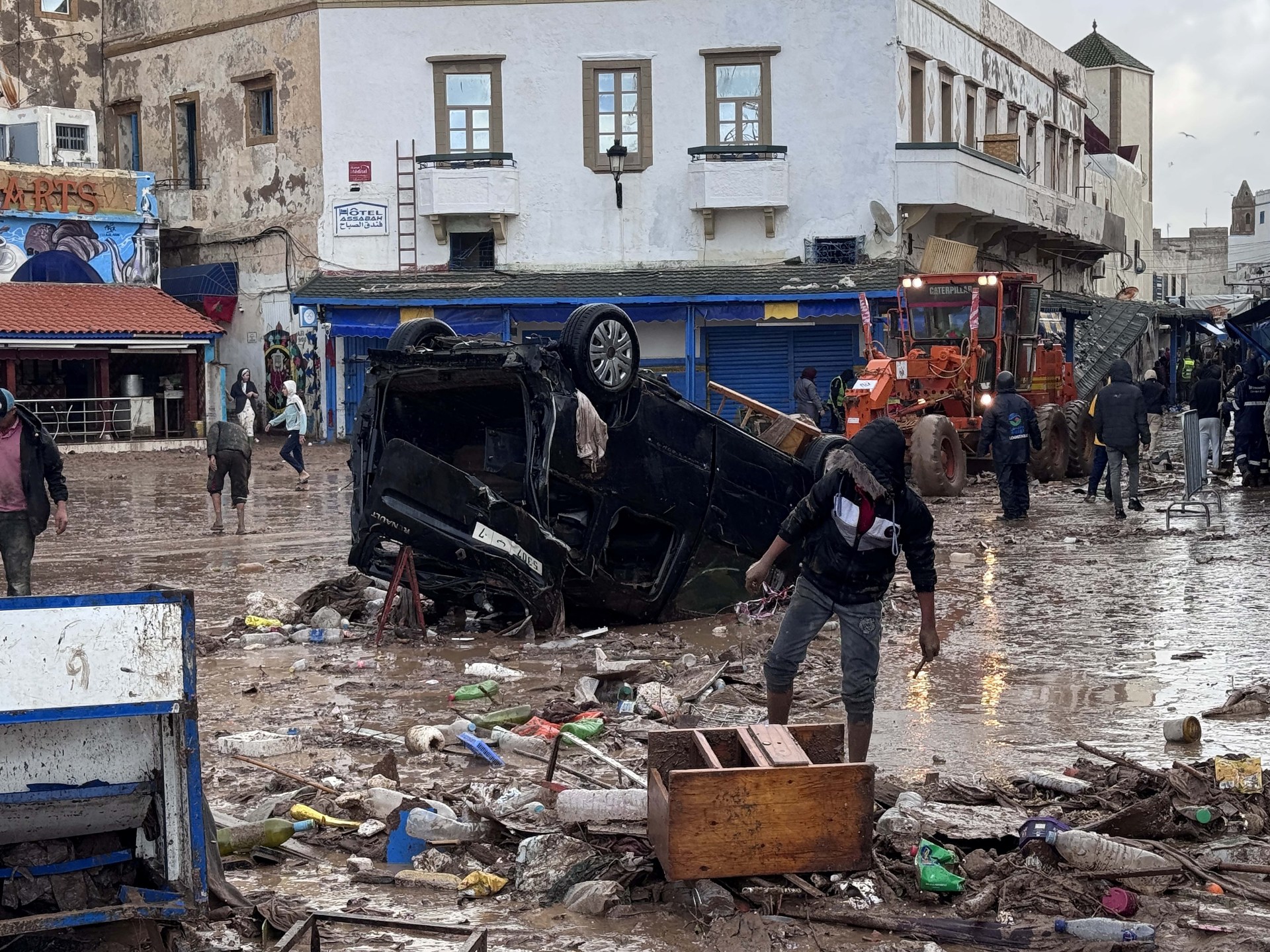
Morocco has launched a nationwide emergency relief operation to support families affected by severe winter weather as communities across the country grapple with deadly floods and plunging temperatures.
The aid program was announced on Tuesday and will reach approximately 73,000 households across 28 provinces hit by freezing conditions, torrential rains and snowstorms, authorities said.
list of 2 itemsend of list
Authorities are distributing food supplies and blankets to families in affected areas, as weather officials warn that dangerous conditions will persist in the coming days.
The relief effort follows a catastrophic flash flood in the coastal city of Safi on Sunday that killed 37 people when a sudden deluge overwhelmed the city.
About 70 homes and shops were damaged after just one hour of intense rainfall, with muddy torrents sweeping vehicles through the streets and trapping residents inside buildings.
Fourteen people required hospital treatment, with two remaining in intensive care, officials said. Schools across Safi have closed for at least three days as debris and mud continue to block roads.
The disaster unfolded in the Bab Chabaa district, where water levels surged to about four metres (13ft) in some areas. One resident, a 67-year-old rights activist, described how shopkeepers became trapped after locking themselves inside their stores as floodwaters rose rapidly, with some merchants and workers unable to escape.
A mother of six told reporters her family had “lost everything”, while another resident said she fled her home with only the clothes she was wearing.
Prosecutors have opened an investigation into whether infrastructure failures contributed to the scale of the tragedy. While a government meteorologist noted that rainfall levels were typical for the region, officials are examining whether inadequate drainage systems may have worsened the flooding.
Weather authorities issued a red alert on Tuesday for snowfall reaching 80cm (31in) in the High Atlas mountains, with an orange alert for heavy rain across central and northern regions.
In mountain areas southeast of the capital Rabat, snow depths have reached 50cm (20in) with overnight temperatures dropping below freezing.
The extreme weather comes after seven consecutive years of drought that left many of the country’s main reservoirs depleted. Last year was Morocco’s hottest on record, and climate scientists say warming temperatures are making storms more intense and unpredictable across North Africa.
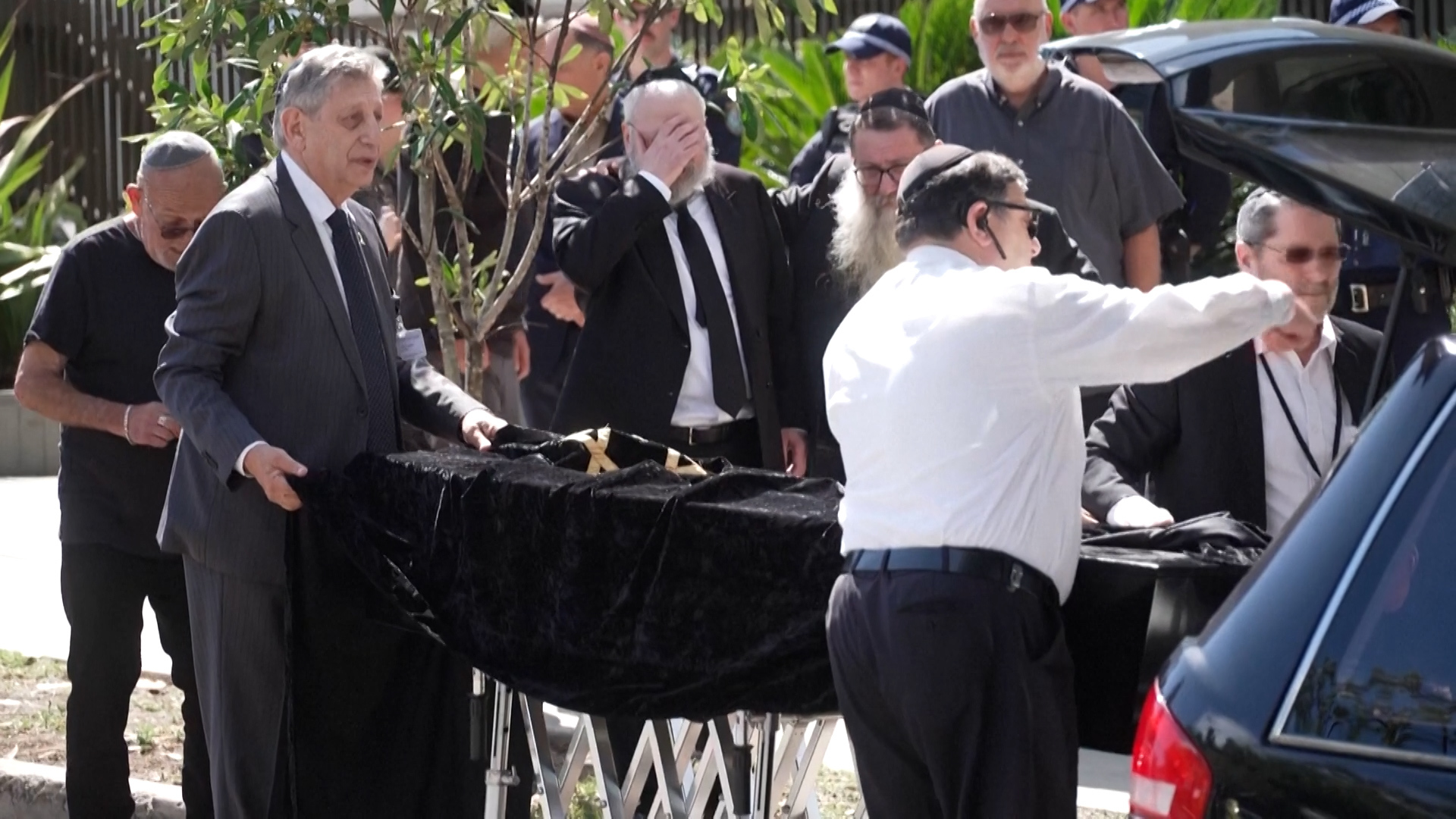
Hundreds of people have attended the funeral in Australia of Rabbi Eli Schlanger, one of 15 people killed in the gun attack on a Jewish celebration at Sydney’s Bondi Beach. The surviving gunman has been charged with 59 crimes including murder and ‘terrorism’.
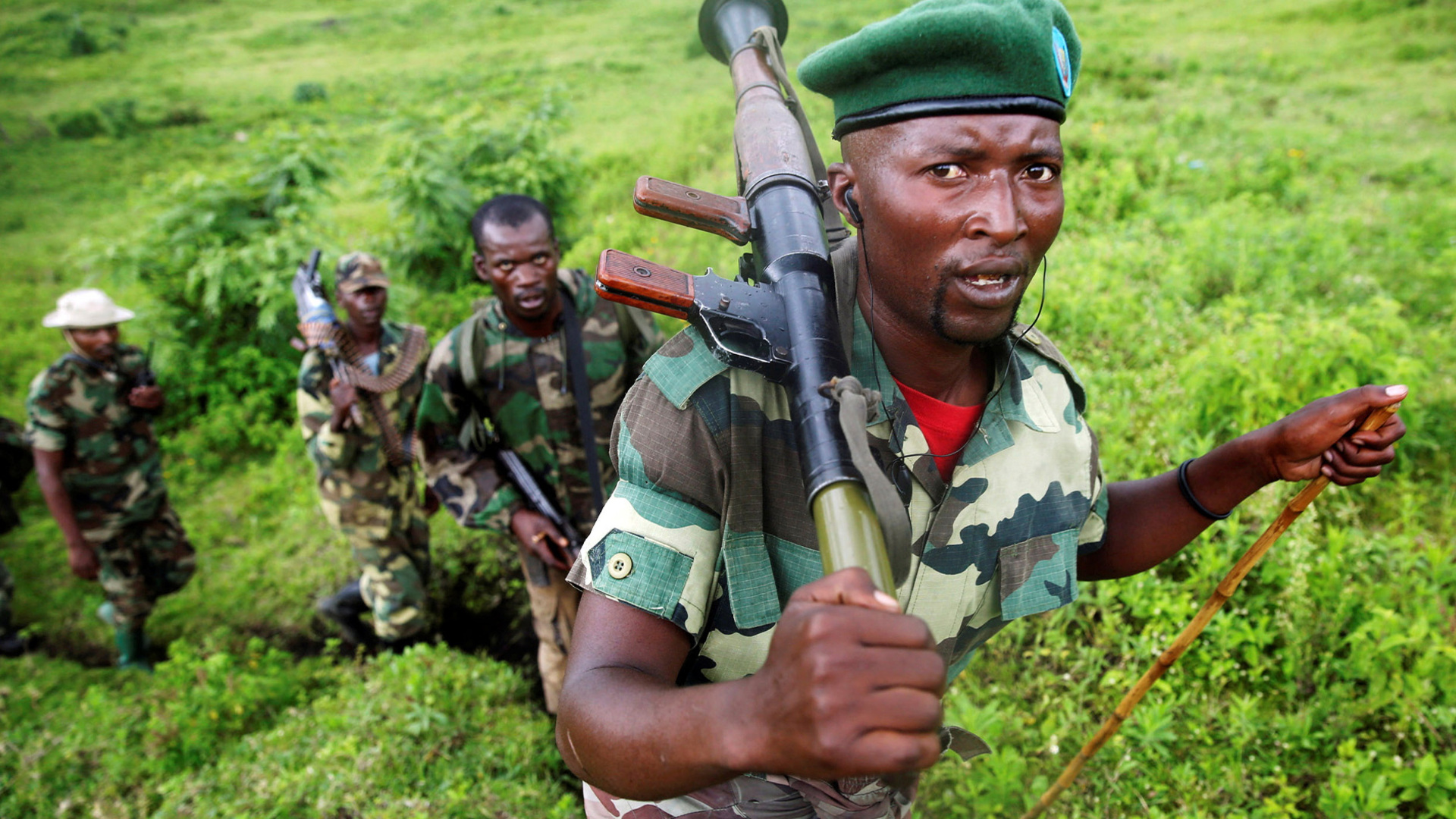
After seizing the strategic border town of Uvira, M23 rebels are now pushing further south along Lake Tanganyika — a move that could dramatically reshape its control over areas in eastern Democratic Republic of Congo.
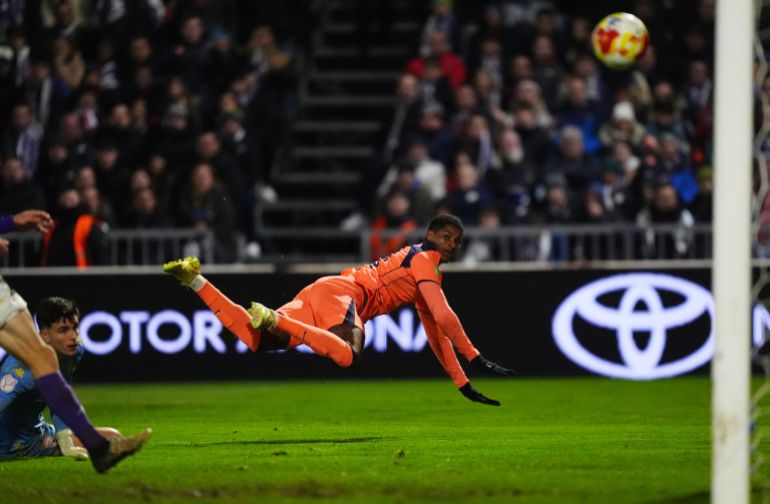
Late strikes from Andreas Christensen and Marcus Rashford secured a hard-fought 2-0 victory for Barcelona against third-tier side Guadalajara on Tuesday, sending the Catalans through to the last 16 of the Copa del Rey.
Barcelona laboured for much of the match at the Pedro Escartin stadium, holding more than 80% of possession but struggling to break down a disciplined five-man Guadalajara defence.
list of 4 itemsend of list
The home side posed a constant threat on the counterattack and frustrated the European heavyweights for long stretches.
Barcelona coach Hansi Flick introduced regular starters Pau Cubarsi, Alejandro Balde, Jules Kounde, and Pedri from the bench in the second half, seeking a breakthrough.
The changes finally paid dividends in the 77th minute when Frenkie de Jong whipped in a cross from the right, and defender Christensen rose highest to meet the delivery, with his header deflecting off Guadalajara’s Julio Martinez before nestling in the net.
The hosts nearly produced an immediate response, with Salifo Caropitche unleashing a fierce drive from distance, but Barcelona goalkeeper Marc-Andre ter Stegen – who was playing his first game for Barca since May – reacted superbly to tip the effort over the bar, preserving his side’s slender lead.
Guadalajara’s hopes were extinguished in the dying moments when Lamine Yamal played a sublime through-ball into the path of Rashford.
The English forward showed great composure, wrong-footing keeper Dani Vicente with a quick cut to his left before tapping the ball into the empty net to wrap up the result for Barcelona.
“These are tricky matches; they come out with everything they’ve got and we have to do the same,” Cubarsi told TVE.
“In the second half, we picked up the pace and moved them from side to side to tire them out. As the minutes passed, they grew tired, and that was the key point. They played spectacularly well.”